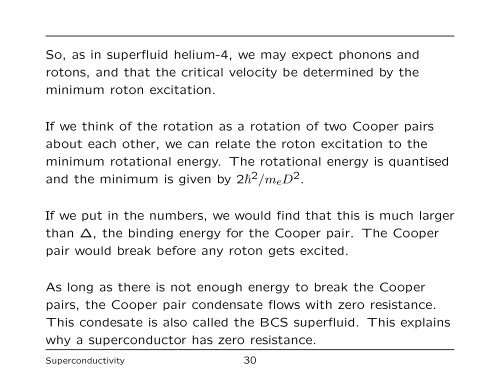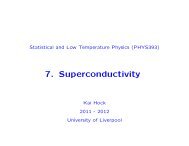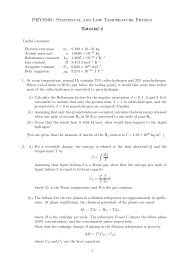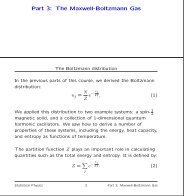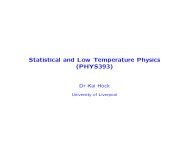The Nature of the Cooper Pair - University of Liverpool
The Nature of the Cooper Pair - University of Liverpool
The Nature of the Cooper Pair - University of Liverpool
Create successful ePaper yourself
Turn your PDF publications into a flip-book with our unique Google optimized e-Paper software.
So, as in superfluid helium-4, we may expect phonons and<br />
rotons, and that <strong>the</strong> critical velocity be determined by <strong>the</strong><br />
minimum roton excitation.<br />
If we think <strong>of</strong> <strong>the</strong> rotation as a rotation <strong>of</strong> two <strong>Cooper</strong> pairs<br />
about each o<strong>the</strong>r, we can relate <strong>the</strong> roton excitation to <strong>the</strong><br />
minimum rotational energy. <strong>The</strong> rotational energy is quantised<br />
and <strong>the</strong> minimum is given by 2� 2 /meD 2 .<br />
If we put in <strong>the</strong> numbers, we would find that this is much larger<br />
than ∆, <strong>the</strong> binding energy for <strong>the</strong> <strong>Cooper</strong> pair. <strong>The</strong> <strong>Cooper</strong><br />
pair would break before any roton gets excited.<br />
As long as <strong>the</strong>re is not enough energy to break <strong>the</strong> <strong>Cooper</strong><br />
pairs, <strong>the</strong> <strong>Cooper</strong> pair condensate flows with zero resistance.<br />
This condesate is also called <strong>the</strong> BCS superfluid. This explains<br />
why a superconductor has zero resistance.<br />
Superconductivity 30


